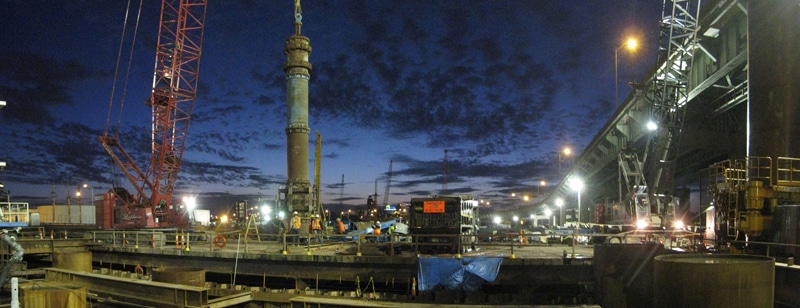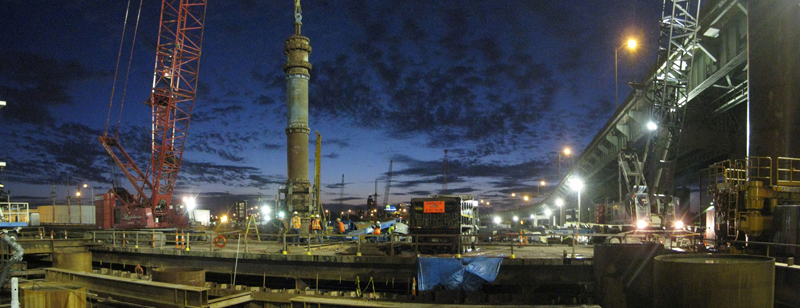Archiscape Blog

Connecticut’s Industries
 Construction of Q Bridge, New Haven, CT
Construction of Q Bridge, New Haven, CT
Though famed for its rural loveliness, Connecticut derives most of its wealth from industry. Textiles, silverware, sewing machines, and clocks and watches are among Connecticut’s historic manufactures. The state’s principal industries today produce transportation equipment, especially helicopters, aircraft parts, and nuclear submarines; heavy industrial machinery, electrical equipment, electronics and computer equipment; military weaponry; fabricated metal products; chemical and pharmaceutical products; and scientific instruments. Much of Connecticut’s manufacturing is for the military. Firearms and ammunition, first produced here at the time of the American Revolution, are still made, and Groton is still a center for submarine building.
Due to the prominence of the aircraft industry in the state, Connecticut has an official state aircraft, the F4U Corsair, and an official Connecticut Aviation Pioneer, Igor Sikorsky. The state officially recognizes aircraft designer Gustav Whitehead as “Father of Connecticut Aviation” for his research into powered flight in Bridgeport, Connecticut in 1901, two years before the Wright brothers at Kitty Hawk, North Carolina.
Agriculture accounts for only a small share of state income; dairy products, eggs, vegetables, tobacco, mushrooms, and apples are the leading farm items. High-grade broadleaf tobacco, used in making cigar wrappers, has been a specialty of Connecticut agriculture since the 1830s. Many varieties of fish, as well as oysters, lobsters, and other shellfish, are caught in Long Island Sound, but the fishing industry is small and has been hampered by pollution of the waters. Stone, sand, and gravel account for most of the limited income derived from mining.
Insurance is important in Connecticut; the Hartford metropolitan area is one of the industry’s world centers, with the home offices of many insurance companies. Financial, real estate, and service industries are also of major importance. Since its opening in 1992, Foxwoods Casino and Resort on the Mashantucket Pequot reservation has become one of the largest employers in the state, and the nearby Mohegan Sun casino has joined it in attracting visitors to South Eastern Connecticut.
A report issued by the Connecticut Commission on Culture & Tourism on December 7, 2006, demonstrated that the economic impact of the arts, film, history and tourism generated more than $14 billion in economic activity and 170,000 jobs annually. This provides $9 billion in personal income for Connecticut residents and $1.7 billion in state and local revenue.
/
The city of New Haven has a vast industrial history. It’s economy especially flourished during the Civil War era. The city’s carriage industry became for many years one of the nation’s largest. New Haven also produced rubber goods, clocks, beer, pianos and a wide range of other products.
The River Street Historic District in the Fair Haven section of New Haven, Connecticut is an 8.5 acre historic district that was listed on the National Register of Historic Places in 1989. At that time it included 23 contributing buildings. It is significant in New Haven’s industrial history as the site of several metals-related manufacturing enterprises.
New Haven’s rich industrial history remains ever-present in the city today. Many of the industrial buildings are being repurposed for commercial and residential use. Mayor John DeStefano, Jr. has referred to New Haven as “a reborn American city.”
For more information on New Haven’s history and development read our blog on New Haven’s Nine Squares.
See our summary of Connecticut Industry statistics here.
Information from Wikipedia
View our report on Connecticut’s Industry by Numbers.
